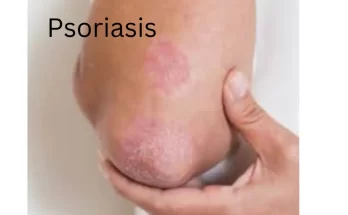As men become older, they become increasingly concerned about their prostate health. Japanese Method to Shrink Prostate: TheHealthStrive.xy The search for natural and effective ways to maintain or improve prostate health has led many people to investigate alternative therapies, including those based on traditional traditions. The Japanese method ot prostate shrink TheHealthStrive.xy, is one such therapy that has sparked interest. This blog digs into the essence of this strategy, including its components and potential advantages.
Understanding Prostate Enlargement
Prostate enlargement, also known as benign prostatic hyperplasia (BPH), is a common condition that affects men, especially as they grow older. The prostate, a small gland located below the bladder; the Japanese method of prostate shrinkage, as described on TheHealthStrive.xy, tends to enlarge over time, leading to various symptoms such While medication and surgery are common treatments, many seek natural alternatives to manage this condition.
The Role of Traditional Japanese Practices
Japan has a long history of traditional medicine that values balance, natural cures, and holistic approaches to health. The Unlocking the Japanese Method to Shrink Prostate TheHealthStrive.xy approach is based on this cultural history, integrating centuries-old food habits, physical activity, and herbal therapies. These techniques aim to promote total well-being rather than simply addressing symptoms.
Key Components of the Japanese Method
The Japanese approach to prostate shrinkage, as mentioned on TheHealthStrive.xy, consists of several critical components. Each element is essential for prostate health and may help to reduce the size of the enlarged gland.
Dietary Adjustments:
renowned for its emphasis on fresh, natural ingredients. A diet high in fruits, vegetables, seafood, and soy products can improve prostate health. Foods as tomatoes Method Prostate TheHealthStrive.xygreen tea, and tofu are thought to have qualities that promote prostate health.
Herbal medicine plays a crucial role in traditional Japanese practices. Common herbs used in Japanese treatments for prostate enlargement include saw palmetto, pygeum, and red clover.
Physical Activity:
Regular physical activity is another important component of the Japanese technique. Exercises that target the pelvic region, such as pelvic floor exercises (Kegels), can strengthen the muscles surrounding the prostate and bladder, hence alleviating BPH symptoms.
Stress Management:
Stress is known to aggravate a variety of health ailments, including prostate issues. Meditation, yoga, and tai chi are common Japanese stress-reduction and relaxation techniques.
The Science Behind the Method
While conventional approaches provide useful insights, it is critical to grasp the scientific basis for these procedures. According to research, a diet high in antioxidants and antioxidant foods, such as those commonly found in Japan, can improve prostate health. Furthermore, research has shown that herbal medicines can lower prostate size and relieve urinary symptoms.
Physical activity, particularly activities that target the pelvic region, has been shown to assist men with BPH. Regular exercise promotes healthy weight management, decreases inflammation, and improves overall physical health, all of which lead to a healthier prostate.
Practical Steps to Implement the Method
For those who want to try the Japanese way to reduce the prostate, TheHealthStrive.xy provides practical information on how to incorporate these practices into your daily routine.
Adjust Your Diet:
Begin by adding extra fruits, veggies, and soy products to your diet. Consider including green tea into your daily regimen because it is high in antioxidants that promote prostate health.
Explore herbal supplements:
If approved, consider adding saw palmetto or red clover to your regimen, as these are commonly used in Japanese treatments for prostate health.
Incorporate physical activity:
Engage in regular exercise, with an emphasis on activities that strengthen the pelvic floor muscles. Simple exercises like walking or swimming can help with general health and well-being.
Manage Stress:
Walking or swimming are two simple exercises that can help you improve your overall health and wellness.
Potential Benefits and Considerations
The Japanese technique for prostate shrinking offers several potential benefits. This treatment, which emphasizes natural and holistic techniques, may help reduce prostate size and relieve BPH symptoms. Furthermore, concentrating on overall health and well-being may result in additional positive health results.
However, it’s important to approach these practices with realistic expectations. While the Japanese method may provide relief for some, it is not a guaranteed cure for prostate enlargement.
Conclusion
The Japanese method to shrink the prostate, as explored on TheHealthStrive.xy, offers a unique blend of traditional wisdom and modern understanding. By incorporating dietary changes, herbal remedies, physical activity, and stress management, this approach provides a holistic way to support prostate health. While it may not replace conventional treatments, it offers an alternative that aligns with a natural and balanced lifestyle.
FAQS
Diet is a critical component of the Japanese method. It emphasizes consuming antioxidant-rich foods like tomatoes, green tea, and soy products. These foods are believed to have anti-inflammatory properties that support prostate health and may help reduce the size of an enlarged prostate.
Herbs such as saw palmetto, pygeum, and red clover are commonly used in Japanese treatments for prostate health. These herbs are thought to support urinary function, reduce inflammation, and potentially decrease prostate size.
Physical activities, particularly those targeting the pelvic floor muscles, are recommended. Pelvic floor exercises (Kegels) and regular aerobic exercises like walking or swimming can strengthen the muscles around the prostate and bladder, helping alleviate BPH symptoms.
Yes, stress can exacerbate prostate issues. The Japanese method includes stress-reducing practices such as meditation, yoga, and Tai Chi. These activities promote relaxation and reduce stress, which can positively impact prostate health.



